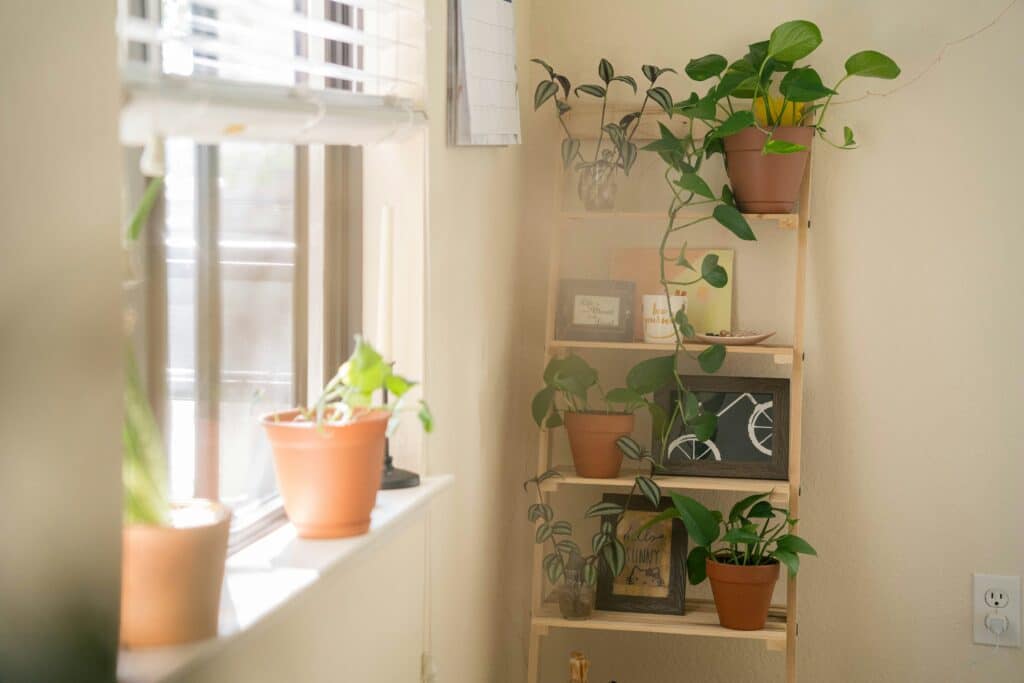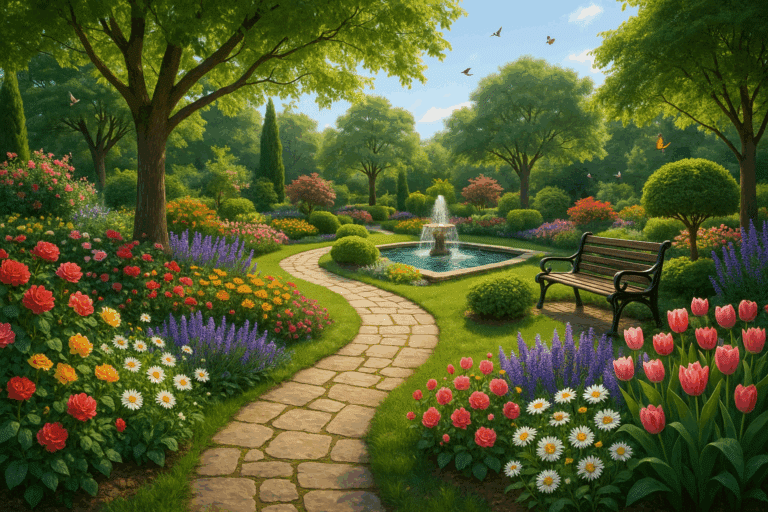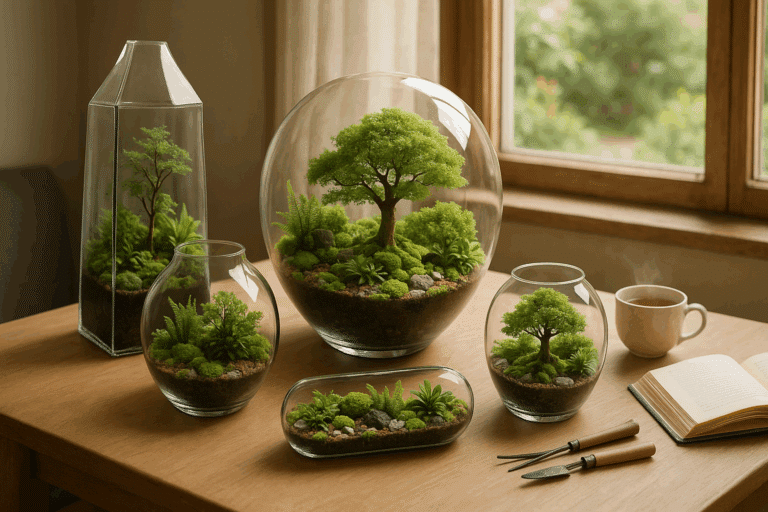Offering a fresh take on home décor, these stylish and functional options can help you elevate your interiors while providing a serene and tranquil environment. In the midst of urban living, the need for a hint of green is always felt. Adding hanging plant shelves to your space not only enhances the aesthetic appeal, but it also brings in an element of nature, improving the overall air quality. Moreover, it is an incredible way to make use of vertical space, particularly for those who are restricted by limited living space. The versatility of hanging plant shelves is another aspect that makes them an exciting choice for home décor enthusiasts. Whether you have a rustic theme going on or a minimalist Scandinavian design, these shelves can blend in seamlessly, enhancing the overall vibe. They can be hung in living rooms, balconies, kitchens, or even bathrooms, adding a lively touch to any corner. In this enlightening discussion, we will delve into the different types of hanging plant shelves, along with a guide on how to choose the right one for your space. We will also provide some useful tips on how to maintain these shelves for lasting beauty. Let’s embark on this green journey together, and give your home a refreshing makeover!

Selecting the Best Materials for Your Shelves
When choosing materials for your hanging plant shelves, consider both functionality and style. Wood is a popular option due to its natural appearance and ability to complement most interior designs. Reclaimed wood adds a rustic charm, while polished or painted wood can create a modern, sleek look. If you are aiming for an industrial or minimalist aesthetic, metal shelves can be an excellent fit. They offer a sturdy structure and a clean, contemporary vibe. For a more delicate or artistic touch, glass shelves provide a sophisticated feel, especially when paired with small, ornamental plants. Keep in mind that glass may require more maintenance and is best used in areas where it won’t be easily bumped or disturbed.
Another factor to consider is moisture resistance. Bathrooms and kitchens can be humid environments, so materials used in these spaces should be treated or naturally resistant to moisture. Bamboo and treated woods can work well in such conditions. Combining materials, such as wood and metal, can offer a unique design that is both durable and visually appealing. Always ensure that the materials can support the weight of the plants and containers you plan to use.
Designing for Vertical Impact
One of the most exciting aspects of hanging plant shelves is their ability to transform vertical space. Vertical gardening is especially beneficial in apartments or small homes where horizontal surface area is limited. You can create a striking visual feature by stacking multiple shelves at staggered heights or aligning them in a symmetrical arrangement. This not only optimizes space but also adds depth and dimension to your walls.
When designing vertically, think about the overall balance. Larger plants should be placed on the lower shelves to prevent the structure from looking top-heavy. Lighter, trailing plants can occupy the higher levels to draw the eye upward. Using plant stands or brackets with adjustable heights can also help you tailor the layout to your needs. Integrating lighting, such as wall-mounted sconces or hanging string lights, can further enhance the visual appeal and support plant growth in low-light areas.
Exploring Creative Placement Ideas
Hanging plant shelves are not limited to living rooms or balconies. Their adaptability allows them to be installed in various spaces throughout the home. In the kitchen, they can be used to grow fresh herbs such as basil, mint, or rosemary, offering both beauty and functionality. In bathrooms, humidity-loving plants like pothos, Boston ferns, and peace lilies can thrive while adding a spa-like ambiance.
Bedrooms can also benefit from hanging plant shelves. Incorporating calming greenery into your sleeping area can promote relaxation and better air quality. Use shelves above the bed or near windows to maximize light exposure without occupying floor space. Entryways and hallways are often overlooked areas that can be brought to life with a simple arrangement of plants on floating shelves. Even home offices can feel more dynamic and inspiring with a few well-placed plant shelves.
Pairing Plants with Decorative Elements
To elevate the design of your hanging plant shelves, consider combining greenery with decorative objects. Small sculptures, candles, framed art, or books can be interspersed among the plants to create a more curated and personalized display. Using decorative pots and planters is another way to enhance the aesthetic. Choose containers in materials that match your interior theme, such as ceramic, terracotta, or woven baskets.
The use of color is also important. Coordinating the colors of the plants, pots, and shelving can result in a cohesive look. Neutral tones create a calming effect, while bold colors can make the shelf a standout feature. You can also experiment with plant shapes and textures. Mixing trailing vines with upright succulents and leafy ferns introduces visual interest and contrast.
Incorporating Smart Watering Solutions
Maintaining plants on hanging shelves can be tricky if the watering process is not convenient. One way to simplify this is by using self-watering planters, which store water at the base and allow plants to draw moisture as needed. This method is especially useful for busy individuals or for plants in hard-to-reach places.
Another tip is to use plant saucers with drainage holes to avoid water spills, especially if shelves are installed over furniture or electronics. For plants that require frequent misting, consider placing them on lower shelves or using a misting bottle with a long nozzle to reach them easily. Grouping plants with similar watering needs together can also make care routines more efficient.
Enhancing Lighting for Shelf Plants
Lighting is critical for the health of indoor plants. While natural light is ideal, not all spaces have enough exposure. If your hanging plant shelves are in a dimly lit area, you may need to supplement with artificial lighting. Grow lights are available in various forms, including clip-on, under-shelf, and pendant styles. These lights are designed to provide the spectrum of light needed for photosynthesis.
When using grow lights, ensure they are positioned at the correct distance from the plants to avoid burning or insufficient exposure. A timer can help automate the lighting schedule, ensuring that your plants receive consistent light daily. If your shelves are near windows, rotating the plants regularly helps ensure even growth and prevents them from leaning toward the light source.
Seasonal Adjustments and Plant Rotation
Indoor plants can be sensitive to seasonal changes, even if they are not directly exposed to outdoor elements. During winter, reduced sunlight and lower temperatures may affect plant health. Adjust watering schedules to prevent overwatering in cooler months and consider moving shelves closer to windows or adding extra lighting.
In spring and summer, growth accelerates and plants may require more frequent feeding and repotting. Use this time to refresh the soil, prune back dead growth, and potentially rearrange the shelf layout to accommodate growing foliage. Rotating plants between rooms based on seasonal light changes can also help maintain consistent health and appearance.
Creating a Maintenance Routine
To keep your hanging plant shelves looking their best, establish a simple maintenance routine. Regularly check for pests such as aphids or spider mites, especially on plants with dense foliage. Clean the shelves and containers to prevent dust buildup, which can block light from reaching the plants.
Feeding your plants with appropriate fertilizers supports healthy growth. Liquid fertilizers can be added during regular watering sessions, while slow-release pellets offer longer-term nutrition. Trimming and deadheading flowers helps maintain a tidy appearance and encourages new growth. Taking the time to inspect each plant weekly allows you to catch issues early and enjoy a thriving indoor garden.
Safety and Weight Considerations
Before installing hanging plant shelves, it is essential to assess the load-bearing capacity of your walls or ceilings. Use appropriate anchors and brackets designed to support the weight of both the shelves and the plants. This is particularly important in older buildings where wall integrity might be compromised.
Choose lightweight containers and potting mixes to minimize overall weight. Consider the moisture content of soil, which adds to the load. If you are renting or prefer not to drill into walls, there are freestanding hanging shelf options and tension rod systems that offer flexibility without permanent installation.
Adding a Personal Touch to Your Green Display
Personalizing your hanging plant shelf setup can turn a functional space into a true reflection of your style. Consider integrating themes such as bohemian, vintage, or coastal to align with the rest of your home’s décor. Use handcrafted elements, such as macramé hangers, woven baskets, or custom-made planters, to infuse character into the arrangement.
Family heirlooms or travel souvenirs can be placed among the plants to tell a story or evoke fond memories. Seasonal decorations, such as small ornaments or themed pots, can also refresh the look without a complete overhaul. The flexibility of hanging shelves allows you to continuously evolve the space as your preferences or plant collection grows.
Installation Tips for Hanging Plant Shelves
Installing hanging plant shelves may seem daunting, but with the right tools and guidance, it can be a relatively straightforward process. First, measure the space where you want to install the shelf. Make sure it’s large enough to accommodate the shelf and the plants you want to display. Next, decide on the type of shelf you want. There are numerous designs available, from simple wooden platforms to intricate metal structures. Once you have chosen a design, you can purchase a ready-made shelf or make your own. If you choose to make your own, ensure you have the necessary tools and materials. Finally, install the shelf according to the manufacturer’s instructions. Ensure it’s securely fixed to the wall or ceiling, as the weight of the plants could cause it to fall if not properly installed.
Maximizing the Use of Hanging Plant Shelves
To maximize the use of hanging plant shelves, consider the following tips:
- Rotate your plants: Different plants have different light needs. Rotate your plants regularly to ensure they all get the amount of light they need.
- Use suitable containers: Choose containers that have good drainage and are suitable for the size of your plants. Overcrowding can lead to poor plant health.
- Maintain your plants: Regularly water and feed your plants according to their specific needs. Deadhead flowers and trim any dead leaves to keep your plants looking their best.
Benefits of Hanging Plant Shelves

Hanging plant shelves offer several benefits, particularly for those living in apartments or small houses. Here are a few reasons why you might want to consider installing one in your home:
- Space-saving: Hanging plant shelves utilize vertical space, allowing you to grow more plants in a smaller area.
- Improved air quality: Plants are known to purify the air by absorbing carbon dioxide and releasing oxygen. They also absorb harmful toxins, improving the overall air quality in your home.
- Stress relief: Studies have shown that being around plants can help reduce stress and improve mood. A hanging plant shelf can serve as a mini indoor garden, providing a calming and relaxing environment.
- Decorative: Hanging plant shelves can add a touch of greenery to your space, enhancing its aesthetic appeal.
Choosing the Right Hanging Plant Shelf
When choosing a hanging plant shelf, consider the following factors:
- Material: Choose a material that suits your decor and can withstand the weight of your plants.
- Design: The design of the shelf should complement your home’s aesthetic. Choose a simple design for a minimalist look or an intricate design for a more elaborate decor.
- Size: Consider the size of the shelf and how many plants it can hold. A larger shelf can hold more plants but will also take up more space.
In conclusion, hanging plant shelves are a practical and stylish way to bring life to your space. With the right choice of plants, a well-installed shelf, and regular maintenance, you can create a vibrant and refreshing indoor garden that elevates your home decor.
Conclusion
In summary, incorporating hanging plant shelves in your home decor can significantly enhance the aesthetics of your space while adding a touch of nature. These versatile and stylish home accessories not only offer a unique way to display your favorite plants, but they also provide a functional solution for those living in homes with limited space. By cleverly utilizing vertical space, hanging plant shelves can give life to even the smallest of rooms. Furthermore, they present an excellent opportunity to experiment with various plants and designs. You can mix and match different plants or layer shelves to create a visually striking and personalized green corner in your home. The options are truly endless. In addition, these shelves are not just for plant lovers. They can also be used as a storage solution or as an unconventional way to display books, trinkets, or other decor items. Lastly, hanging plant shelves are not only a trendy decor choice, but they also contribute to a healthier indoor environment by purifying the air and improving your mood. All in all, they are a fantastic addition to any home, blending both style and functionality.
Conclusion: Hanging plant shelves can truly elevate your home decor, making your space more vibrant, cozy, and inviting. It’s time to bring life to your space and enjoy the many benefits these stylish shelves offer. 🌿🌱🌼



